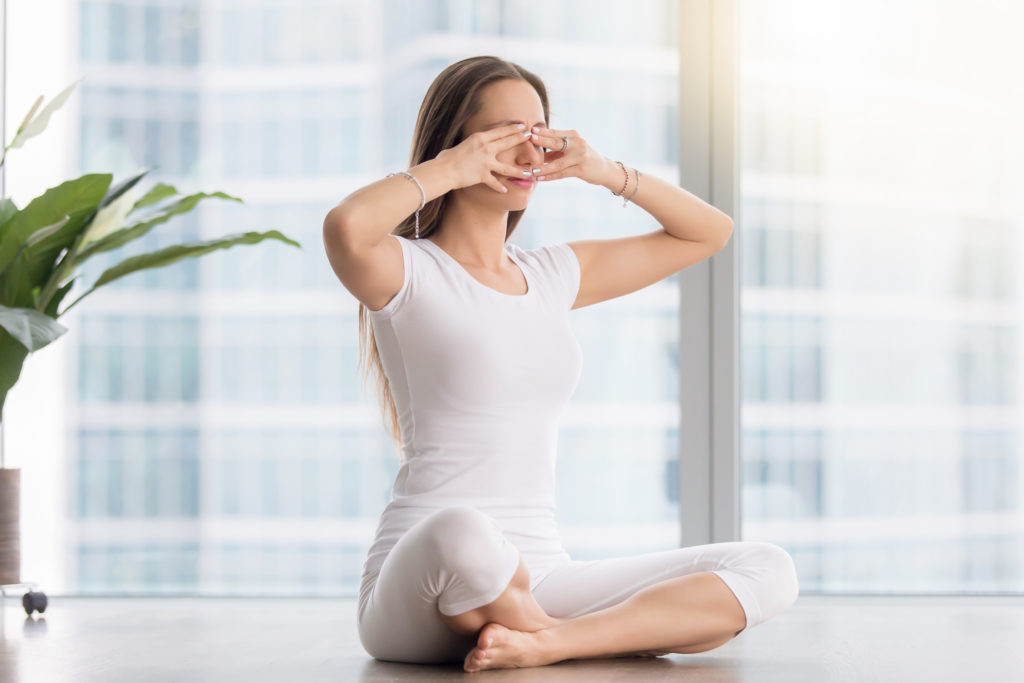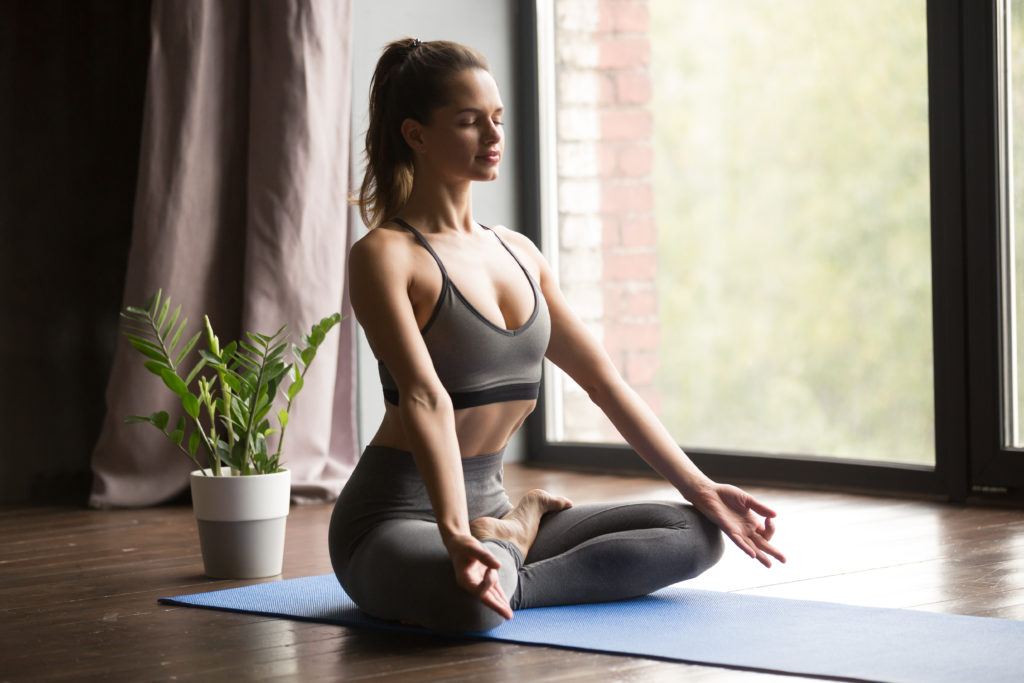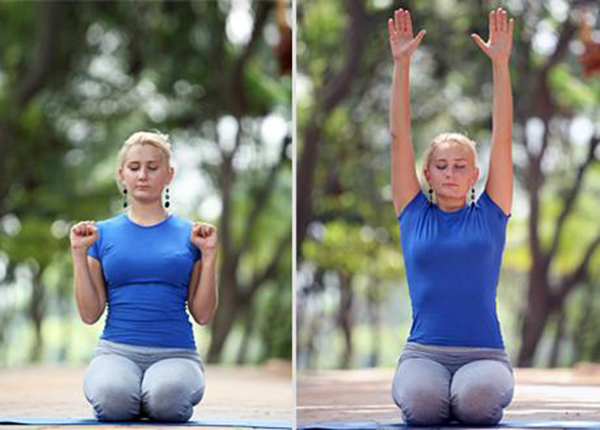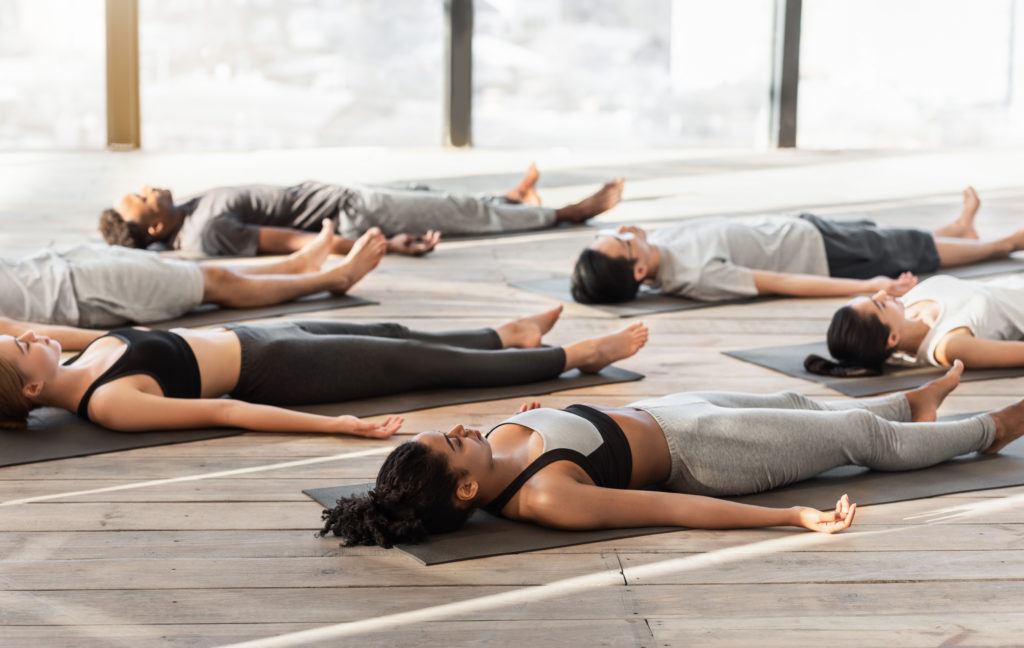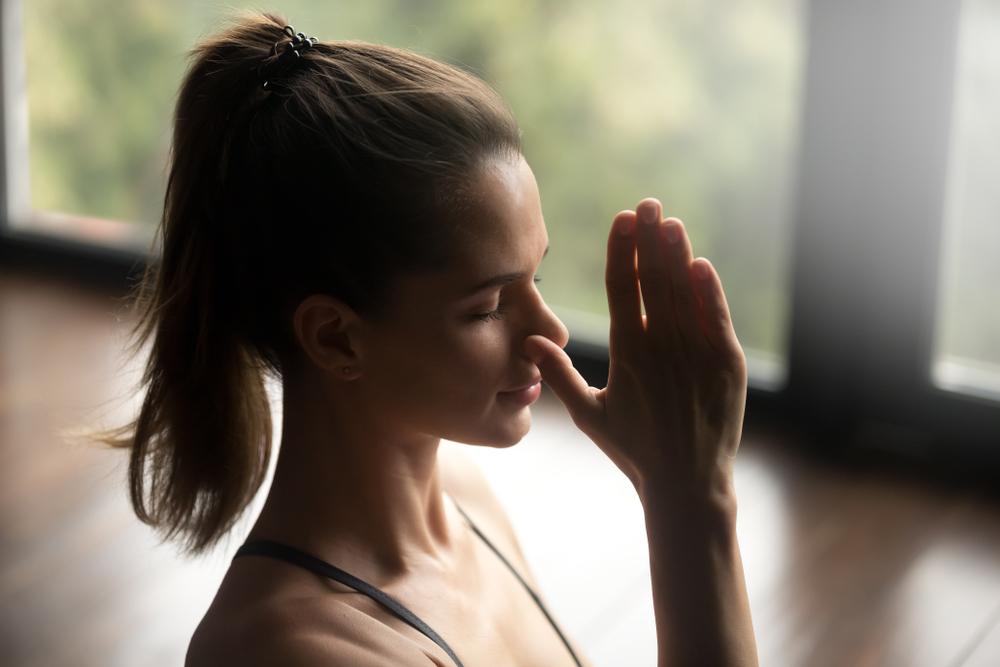Last updated: August 29, 2019
These Terms of Use & Conditions of Sale (“Terms”) is a legally binding agreement between you and Super Youth, LLC (“Super Youth,” “We,” “Our,” or “Us”). Your use of www.superyouth.com (hereafter the “Website”) and any order of Super Youth products that you place through the Website, telephone, or any other accepted method of purchase, is governed by the policies, terms, and conditions set forth within these Terms.
Collection of Information
Before using the Website, please read these Terms carefully. We offer the Website, including all information, tools and services available from the Website to you, the user, conditioned upon your acceptance of all terms, conditions, policies and notices stated here. By accessing, using, or placing an order over the Website, you agree to the terms set forth herein. If you do not agree to these terms and conditions in their entirety, you are not authorized to use the Website in any manner or form whatsoever.
IMPORTANT – PLEASE CAREFULLY READ AND UNDERSTAND THESE TERMS OF USE AND TERMS & CONDITIONS OF SALE BEFORE ACCESSING, USING, OR PLACING AN ORDER WITH SUPER YOUTH AS THESE TERMS FORM AN ESSENTIAL BASIS OF OUR AGREEMENT AND CONTAIN ARBITRATION AND CLASS ACTION WAIVER PROVISIONS. PLEASE CAREFULLY REVIEW THE DISPUTE RESOLUTION PROVISIONS IN SECTION 17 BELOW WHICH ALSO DESCRIBES YOUR RIGHT TO OPT-OUT.
1. Privacy & Security; Disclosure
Our privacy policy may be viewed at www.superyouth.com/privacy-policy. We reserve the right to modify our privacy policy in our reasonable discretion from time-to-time.
2. Products Sold for Personal Use Only
You agree that any products you purchase from Super Youth and/or our Website will be used for your personal, non-commercial use. You agree that you will not resell, re-distribute, modify, or export any product(s) that you order from the Website.
3. Payment Methods
All charges are in U.S. Dollars. We accept U.S. issued credit and debit cards from Visa, MasterCard, American Express, and Discover.
When placing an order online, you will need:
a. The address the card’s statement is sent to (billing address).
b. The card number and expiration date.
c. The 3 or 4 digit code found only on the card (CVV2 code)
By submitting credit card information or other payment information to us, you represent and agree that: (i) you are fully entitled to use that card or account; (ii) if you choose a subscription-based purchase, that you will pay all payments for your subscriptions by the date due; (iii) all payment information provided is complete and accurate; (iv) you will be responsible for any credit card fees; and (v) that sufficient funds exist to pay us the amount(s) due.
We and our third party payment service providers may request, and we may receive, updated credit card information from your credit card issuer, such as updated card numbers and expiration date information when your credit card has expired. If such updated information is provided to us and our third-party payment service providers, we will update your account information accordingly, and will use such updated information to process payments for your subscription(s) if you signed up for subscription(s). Your credit card issuer may give you the right to opt out of providing vendors and third-party payment service providers with your updated credit card information. If you wish to opt out of your credit card’s updating service, you should contact your credit card issuer.
We are not responsible for any fees or charges that your bank or credit card issuer may apply. If your bank or credit card issuer reverses a charge to your credit card, we may bill you directly and seek payment by another method including a mailed statement.
4. Ordering Disclaimer
Your electronic order confirmation, or any form of confirmation, does not signify our acceptance of your order. We reserve the right to accept or deny shipment to anyone for any reason. In the event we deny your order, you will be refunded back to your original form of payment. We reserve the right to require additional information before processing any order.
5. Shipping Policies
We ship orders within the 50 United States via UPS Ground Shipping. Depending on product availability, orders shipped usually arrive within 4 to 6 business days. Accurate shipping address and phone number are required. We are not responsible for late shipments/missing shipments if you enter incorrect shipping address information. If you discover that you have made a mistake with your order after you have submitted it to the Website, please contact [email protected] immediately. You must contact us as soon as possible in order to modify or cancel your pending order. However, we frequently ship the same day that you order, so we cannot guarantee that we will be able to amend your order in accordance with your instructions.
6. Delivery Confirmation
Because many instances may occur at your delivery address that are beyond our control, you agree that any delivery confirmation provided by the carrier is deemed sufficient proof of delivery to the card holder, even without a signature.
7. Subscription – Renewal and Cancellation Terms
If you go to the Website to purchase a product, you may have the option of buying a product one time, or purchasing a subscription. If you purchase a subscription, it is automatically billed every thirty (30) days to the credit card you provided when you purchased the subscription, and it is shipped to you, until you cancel the subscription. Please be aware that any discounted or special offer pricing you may have received on a subscription will not apply to future shipments and you will be charged the full price of the product on subsequent shipments unless otherwise indicated. We may use an account updater to automatically update your credit card information in the event it changes, in which case, your renewal will be billed to the updated account information.
If you wish to cancel your subscription, you may do so at any time, however, you must cancel your subscription twenty-four (24) hours prior to your next shipment going out in order to not receive your next scheduled order. To cancel your subscription, simply call us at 1-888-309-6884 or email us at [email protected].
8. Satisfaction Guaranteed 90 day Return Policy
If you are unsatisfied with our product, or if it arrives damaged, you may return the unused portion within ninety (90) days from the date that the product was originally ordered for a full product refund (minus shipping charges), according to the following terms. To obtain a full refund, your return must be approved and postmarked within ninety (90) days from the date that the product was originally ordered.
The following terms apply for all returned items:
- To return a product for an exchange or full refund, simply call us at 1-888-309-6884 or email us at [email protected] and you will be given a Return Merchandise Authorization (RMA) number and a return shipping label via email.
- We cannot process or refund packages marked “Return to Sender.”
- Refunds will be issued to the original credit card or method of payment that was charged when ordering the product. Refunds cannot be processed to alternate cards or different forms of payment.
- Shipping charges are not refundable in any case.
- To ensure a refund is processed for you, please send returns using the return shipping label sent to you. The shipping label must be clearly attached to the package that you are sending back. Our shipping department is NOT allowed to accept any packages without the return label.
We are not responsible for lost or stolen items. We recommend all returned items to be sent using some type of delivery confirmation system to ensure proper delivery.
After the shipping department receives your return, it generally takes your financial institution 7-10 business days to credit your refund. For some banks, it may take up to 30 days to reflect in your account.
9. Exchange Policy
If you wish to exchange a product for a different product, you may exchange the unused portion of the product you purchased within ninety (90) days. The return process for the unused portion of the original product will be the same as Section 8 above, however, a shipping charge of $9.95 for the new product shall be charged.
10. Price Changes
We reserve the right to adjust pricing for our products and subscriptions in any manner and at any time as we may determine in our sole and absolute discretion. Except as otherwise expressly provided for in these Terms, any price changes to your subscription or purchase of product(s) will take effect following email notice to you.
11. Price Mistakes
Despite our best efforts, sometimes a pricing error happens on our Website. If the correct price of our product is higher than its stated price, we will, at our discretion, either contact you for instruct
12. Chargeback Policy
A “chargeback” is a reversal of a credit/debit card charge placed over www.superyouth.com. It is Super Youth’s view that chargebacks are generally unnecessary and Super Youth strives to amicably resolve any disputes that you may have about billing issues. If a credit is due, simply contact us and we will gladly issue it. If you feel that your credit/debit card was used fraudulently on www.superyouth.com, please contact us for immediate resolution.
13. Your Results Will Vary
Every person has a different body and history, and, therefore, individual results will vary from customer to customer. WHILE SUPER YOUTH PRODUCTS HAVE HELPED MANY PEOPLE, YOUR INDIVIDUAL RESULTS WILL VARY DEPENDING ON A VARIETY OF FACTORS UNIQUE TO YOU, SUCH AS YOUR HEALTH, GENETICS, DIET, AND LEVEL OF EXERCISE. IF YOU ARE NOT SATISFIED WITH YOUR RESULTS, YOUR ONLY REMEDY IS TO RETURN THE PRODUCT FOR A REFUND OR EXCHANGE IN ACCORDANCE WITH THE SATISFACTION GUARANTEED 90-DAY RETURN POLICY SET FORTH ABOVE IN SECTION 8. Remember that exercise and a healthy diet are an important part of any lifestyle!
14. No Medical Diagnosis or Treatment
Super Youth is committed to helping you lose weight and improve your lifestyle. You understand, however, that our products and the statements on the website have not been evaluated by the Food & Drug Administration or medical professionals, and our products and the information on the Website are not intended to diagnose, treat, cure or prevent any health problems, illnesses, or diseases. The information on the Website or provided to you in emails or other communications is designed for informational purposes only and is not intended to be a substitute for informed medical advice or care. You further understand that our products are not intended for use by persons under eighteen (18) years of age and that the products are not to be used to treat any type of medical condition or health problem. You agree that you will cease immediately from using our products if you experience any ill effects or unintended side effects of any product. Super Youth does not warrant or represent that all information about our products is error-free. All product specifications, performance data, and other information on the Website is for informational and illustrative purposes only, and do not constitute a guarantee or representation that the Products will conform to such specifications or performance data. Super Youth does not warrant or represent that our products will provide you with any particular benefits, or that your results will match those of others who use our products. The representations and product disclaimers described above are inapplicable where prohibited by law.
15. Disclaimers of Warranties
EXCEPT WHERE OTHERWISE INAPPLICABLE OR PROHIBITED BY LAW, THE WEBSITE AND ALL CONTENT ARE PROVIDED ON AN “AS IS”, “AS AVAILABLE” BASIS WITHOUT WARRANTIES OF ANY KIND, EITHER EXPRESS OR IMPLIED, INCLUDING BUT NOT LIMITED TO WARRANTIES OF TITLE OR IMPLIED WARRANTIES OF MERCHANTABILITY OR FITNESS FOR A PARTICULAR PURPOSE. WE MAKE NO, AND EXPRESSLY DISCLAIM ANY AND ALL, REPRESENTATIONS AND WARRANTIES AS TO THE RELIABILITY, TIMELINESS, QUALITY, SUITABILITY, AVAILABILITY, ACCURACY AND/OR COMPLETENESS OF ANY INFORMATION ON THIS WEBSITE. WE DO NOT REPRESENT OR WARRANT, AND EXPRESSLY DISCLAIM THAT: (A) THE USE OF THE WEBSITE WILL BE SECURE, TIMELY, UNINTERRUPTED OR ERROR-FREE, OR OPERATE IN COMBINATION WITH ANY OTHER HARDWARE, SOFTWARE, SYSTEM OR DATA, (B) THE WEBSITE OR OUR PRODUCTS WILL MEET YOUR REQUIREMENTS OR EXPECTATIONS, (C) ANY STORED DATA WILL BE ACCURATE OR RELIABLE, (D) THE QUALITY OF ANY PRODUCTS, SERVICES, INFORMATION, OR OTHER MATERIAL PURCHASED OR OBTAINED BY YOU THROUGH THE WEBSITE WILL MEET YOUR REQUIREMENTS OR EXPECTATIONS, (E) ERRORS OR DEFECTS IN THE WEBSITE WILL BE CORRECTED, OR (F) THE WEBSITE OR THE SERVER(S) THAT MAKE THE WEBSITE AVAILABLE ARE FREE OF VIRUSES OR OTHER HARMFUL COMPONENTS. ALL CONDITIONS, REPRESENTATIONS AND WARRANTIES, WHETHER EXPRESS, IMPLIED, STATUTORY OR OTHERWISE, INCLUDING, WITHOUT LIMITATION, ANY IMPLIED WARRANTY OF MERCHANTABILITY, FITNESS FOR A PARTICULAR PURPOSE, OR NONINFRINGEMENT OF THIRD PARTY RIGHTS, ARE HEREBY DISCLAIMED TO THE MAXIMUM EXTENT PERMITTED BY APPLICABLE LAW.
16. Limitations of Liabilities
EXCEPT WHERE OTHERWISE INAPPLICABLE OR PROHIBITED BY LAW, IN NO EVENT SHALL SUPER YOUTH OR ANY OF ITS OFFICERS, DIRECTORS, SHAREHOLDERS, EMPLOYEES, INDEPENDENT CONTRACTORS, TELECOMMUNICATIONS PROVIDERS, AND/OR AGENTS BE LIABLE FOR ANY INDIRECT, SPECIAL, INCIDENTAL, EXEMPLARY, CONSEQUENTIAL, PUNITIVE, OR ANY OTHER DAMAGES, FEES, COSTS OR CLAIMS ARISING FROM OR RELATED TO THIS AGREEMENT, THE PRIVACY POLICY, THE PRODUCTS, OR YOUR OR A THIRD PARTY’S USE OR ATTEMPTED USE OF THE WEBSITE OR ANY PRODUCT, REGARDLESS OF WHETHER SUPER YOUTH HAS HAD NOTICE OF THE POSSIBILITY OF SUCH DAMAGES, FEES, COSTS, OR CLAIMS. THIS INCLUDES, WITHOUT LIMITATION, ANY LOSS OF USE, LOSS OF PROFITS, LOSS OF DATA, LOSS OF GOODWILL, COST OF PROCUREMENT OF SUBSTITUTE SERVICES OR PRODUCTS, OR ANY OTHER INDIRECT, SPECIAL, INCIDENTAL, PUNITIVE, CONSEQUENTIAL, OR OTHER DAMAGES. THIS APPLIES REGARDLESS OF THE MANNER IN WHICH DAMAGES ARE ALLEGEDLY CAUSED, AND ON ANY THEORY OF LIABILITY, WHETHER FOR BREACH OF CONTRACT, TORT (INCLUDING NEGLIGENCE AND STRICT LIABILITY), WARRANTY, OR OTHERWISE. IF, NOTWITHSTANDING THE LIMITATIONS OF LIABILITY SET FORTH ABOVE, SUPER YOUTH IS FOUND LIABLE UNDER ANY THEORY, SUPER YOUTH’S LIABILITY AND YOUR EXCLUSIVE REMEDY WILL BE LIMITED TO USD $500.00. THIS LIMITATION OF LIABILITY SHALL APPLY FOR ALL CLAIMS, REGARDLESS OF WHETHER SUPER YOUTH WAS AWARE OF OR ADVISED IN ADVANCE OF THE POSSIBILITY OF DAMAGES OR SUCH CLAIMS. SOME STATES DO NOT ALLOW THE EXCLUSION OF CERTAIN WARRANTIES, SO SOME OF THE ABOVE EXCLUSIONS MAY NOT APPLY TO YOU AND YOU MAY HAVE ADDITIONAL RIGHTS. NOTWITHSTANDING ANYTHING IN THESE TERMS TO THE CONTRARY, THIS LIMITATION OF LIABILITY DOES NOT APPLY TO CONSUMERS IN NEW JERSEY.
17. Dispute Resolution by Mandatory Binding Arbitration and Class Action Waiver
PLEASE READ THIS ARBITRATION PROVISION CAREFULLY TO UNDERSTAND YOUR RIGHTS. EXCEPT WHERE PROHIBITED BY LAW, YOU AGREE THAT ANY CLAIM THAT YOU MAY HAVE IN THE FUTURE MUST BE RESOLVED THROUGH FINAL AND BINDING CONFIDENTIAL ARBITRATION. YOU ACKNOWLEDGE AND AGREE THAT YOU ARE WAIVING THE RIGHT TO A TRIAL BY JURY. THE RIGHTS THAT YOU WOULD HAVE IF YOU WENT TO COURT, SUCH AS DISCOVERY OR THE RIGHT TO APPEAL, MAY BE MORE LIMITED OR MAY NOT EXIST. YOU AGREE THAT YOU MAY ONLY BRING A CLAIM IN YOUR INDIVIDUAL CAPACITY AND NOT AS A PLAINTIFF (LEAD OR OTHERWISE) OR CLASS MEMBER IN ANY PURPORTED CLASS OR REPRESENTATIVE PROCEEDING. YOU FURTHER AGREE THAT THE ARBITRATOR MAY NOT CONSOLIDATE PROCEEDINGS OR CLAIMS OR OTHERWISE PRESIDE OVER ANY FORM OF A REPRESENTATIVE OR CLASS PROCEEDING.
THERE IS NO JUDGE OR JURY IN ARBITRATION, AND COURT REVIEW OF AN ARBITRATION AWARD IS LIMITED. HOWEVER, AN ARBITRATOR CAN AWARD ON AN INDIVIDUAL BASIS THE SAME DAMAGES AND RELIEF AS A COURT (INCLUDING INJUNCTIVE AND DECLARATORY RELIEF OR STATUTORY DAMAGES), AND MUST FOLLOW THE TERMS OF THESE CONDITIONS OF USE AS A COURT WOULD
a. General
Arbitration is a manner of resolving a “Claim” without filing a lawsuit. “Claim” means any dispute between you, Super Youth, or any involved third party relating to your account, your use of the Website, your relationship with Super Youth, these Terms, or the Privacy Policy. This includes any and all claims that relate in any way to your use or attempted use of the products, and any act or omission by Super Youth or any third party related to your use or attempted use of the products. You, Super Youth, or any involved third party may pursue a Claim. Super Youth agrees to final and binding confidential arbitration should it have any Claims against you. Likewise, you agree to final and binding confidential arbitration should you have any Claims against Super Youth. By agreeing to arbitrate, you waive the right to go to court and agree instead to submit any Claims to final and binding confidential arbitration. This arbitration provision sets forth the terms and conditions of our agreement to final and binding confidential arbitration and is governed by and enforceable under the Federal Arbitration Act (the “FAA”), 9 U.S.C. §§ 1-16, as amended.
b. Exceptions
Notwithstanding the foregoing, and as an exception to final and binding confidential arbitration, you and Super Youth both retain the right to pursue, in small claims court, any claim that is within that court’s jurisdiction and proceeds on an individual (non-class) basis, including overdue account matters within the small claims court’s jurisdiction. Super Youth will not demand arbitration in connection with any individual claim that you properly file and pursue in a small claims court, so long as the claim is and remains pending in that court. The following claims shall not be subject to final and binding arbitration and must be adjudicated only in the state or federal courts located in San Diego, California: (i) any dispute, controversy, or claim relating to the infringement or validity of our proprietary rights, including without limitation, trademarks, service marks, trade dress, copyrights, trade secrets, or patents; or (ii) an action by Super Youth for temporary, preliminary, or permanent injunctive relief, whether prohibitive or mandatory, or other provisional relief, against you for breach or threatened breach of this Agreement. You expressly agree to refrain from bringing or joining any claims that are excluded from final and binding arbitration pursuant to this subsection “b” in any representative or class-wide capacity, including but not limited to bringing or joining any claims in any class action or any class-wide arbitration. Small claims matters may be filed in any small claims court with personal and subject matter jurisdiction over the parties. For all other matters excluded from final and binding arbitration by this subsection “b,” the parties consent to exclusive jurisdiction and venue in the state and federal courts located in San Diego, California, and forever waive any challenge to said courts’ jurisdiction and venue.
c. Required Pre-Dispute Procedures
We acknowledge and agree that before initiating any Claim against the other, we agree to first contact the other with a written description of the dispute, which shall include all relevant documents and information, and the proposed resolution. You may send the written description of any dispute you have with us by U.S. Mail to Super Youth, LLC, Attn: Legal Department, 750 B Street, Suite 3300, San Diego, CA 92101. Super Youth will contact you by letter at the billing address you provided to us or at the email address you provided to us. You agree to negotiate with Super Youth or its designated representative in good faith about your problem or dispute. If for some reason the dispute is not resolved within 60 days after receipt of the written dispute, we agree to the dispute resolution provisions below. Notwithstanding the foregoing or any other term of this arbitration agreement, we will have the right to seek injunctive or other equitable relief in state or federal court located in San Diego, California to enforce these Terms or prevent an infringement of a third party’s rights or our intellectual property rights, as stated in subsection “b” above. You hereby expressly consent to, and forever waive any challenge to, the exclusive personal jurisdiction and venue of said courts in such actions.
d. Commencing Arbitration
You and Super Youth agree to commence any arbitration proceeding within 1 year after the Claim arises (the 1 year period includes the required pre-dispute procedures set forth above) and that any arbitration proceeding commenced after 1 year shall be forever barred.
e. Arbitration Location
If the amount in controversy is $500 or less, then the arbitration may be conducted by telephone or by written submissions. Otherwise, the arbitration shall be conducted in San Diego, California unless Super Youth otherwise agrees to arbitrate in another forum requested by you.
f. Organization, Rules and the Arbitrator
We each agree that any and all Claims other than those exempted under subsection “b” above shall be submitted to final and binding confidential arbitration before a single arbitrator of the American Arbitration Association (“AAA”). Either party may commence the arbitration process by submitting a written demand for arbitration with the AAA, and providing a copy to the other party, within the time period set forth in subsection “d” above. The arbitrator shall be selected by agreement of the parties or, if the parties cannot agree, chosen in accordance with Rules of the AAA. The arbitration will be conducted in accordance with the provisions of the AAA’s Commercial Dispute Resolutions Procedures, Supplementary Procedures for Consumer-Related Disputes, in effect at the time of submission of the demand for arbitration. The AAA’S Rules are available at www.adr.org or by calling 1-800-778-7879. The arbitrator shall have the exclusive and sole authority to resolve any dispute relating to the interpretation, construction, validity, applicability, or enforceability of these Terms, the Privacy Policy, and this arbitration provision. The arbitrator shall have the exclusive and sole authority to determine whether any dispute is arbitrable. The arbitrator shall have the exclusive and sole authority to determine whether this arbitration agreement can be enforced against a non-signatory to this agreement and whether a non-signatory to this agreement can enforce this provision against you or Super Youth.
g. Fees
Payment of all filing, administration and arbitrator fees will be governed by the AAA’s Rules. We will reimburse the fees charged by the arbitrator for claims totaling less than $10,000 unless the arbitrator determines the claims are frivolous. Likewise, we will not seek attorneys’ fees and costs in arbitration unless the arbitrator determines the claims are frivolous. In all other respects, the parties shall each pay their own additional fees, costs, and expenses, including, but not limited to, those for any attorneys, experts, documents, and witnesses.
h. Governing Law and Award
The arbitrator shall follow the substantive law of the State of California without regard to its conflicts of laws principles. Any award rendered shall include a confidential written opinion and shall be final, subject to appeal under the FAA. Judgment on the award rendered by the arbitrator may be entered in any court of competent jurisdiction.
i. Enforceability
This provision survives termination of your account or relationship with Super Youth, bankruptcy, assignment, or transfer. If the class action waiver is deemed unenforceable (i.e., unenforceability would allow arbitration to proceed as a class or representative action), then this entire arbitration provision shall be rendered null and void and shall not apply. If a portion of this arbitration provision (other than the class action waiver) is deemed unenforceable, the remaining portions of this arbitration provision shall remain in full force and effect.
j. Miscellaneous
Failure or any delay in enforcing this arbitration provision in connection with any particular Claim will not constitute a waiver of any rights to require arbitration at a later time or in connection with any other Claims except all Claims must be brought within the 1 year limitation period set forth above. This provision is the entire arbitration agreement between you and Super Youth and shall not be modified except in writing by Super Youth.
k. Amendments
Super Youth reserves the right to amend this arbitration provision at any time. Your continued use of the Website, purchase of a product on or through the Website, or use or attempted use of a Super Youth product, is affirmation of your consent to such changes. Should the changes to this arbitration provision be material, Super Youth will provide you notice and an opportunity to opt-out. Your continued use of the Website, purchase of a product on or through the Website, or use or attempted use of a Super Youth product, is affirmation of your consent to such material changes.
YOU UNDERSTAND AND AGREE TO HAVE ANY CLAIMS DECIDED INDIVIDUALLY AND ONLY THROUGH BINDING, FINAL, AND CONFIDENTIAL ARBITRATION. YOU HAVE THE RIGHT TO OPT-OUT OF THIS ARBITRATION PROVISION WITHIN THIRTY (30) DAYS FROM THE DATE THAT YOU PURCHASE, USE, OR ATTEMPT TO USE A PRODUCT PURCHASED ON OR THROUGH THE WEBSITE (WHICHEVER COMES FIRST) BY WRITING TO US AT SUPER YOUTH, LLC, ATTN: LEGAL DEPARTMENT, 750 B STREET, SUITE 3300, SAN DIEGO, CA 92101. FOR YOUR OPT-OUT TO BE EFFECTIVE, YOU MUST SUBMIT A SIGNED WRITTEN NOTICE IDENTIFYING ANY PRODUCT YOU PURCHASED, USED OR ATTEMPTED TO USE WITHIN THE 30 DAYS AND THE DATE YOU FIRST PURCHASED, USED OR ATTEMPTED TO USE THE PRODUCT. IF MORE THAN THIRTY (30) DAYS HAVE PASSED, YOU ARE NOT ELIGIBLE TO OPT OUT OF THIS PROVISION AND YOU MUST PURSUE YOUR CLAIM THROUGH BINDING ARBITRATION AS SET FORTH IN THIS AGREEMENT.
18. Use of this Website
This Website and its contents, features, functionalities, information, text, trademarks, displays, photographs, graphics, and designs (collectively, “Super Youth Content”) are owned or licensed by Super Youth. The Website and the Super Youth Content are protected by copyright, trademark, trade secret, and other intellectual property or proprietary rights laws. Except as otherwise provided herein, this Website, the Super Youth Content, or any portion of this Website may not be reproduced, duplicated, copied or otherwise exploited for any purpose without our express written consent. You may not use any of our trademarks or service marks in meta tags without prior explicit consent. You acknowledge and agree that if you use the Website or any other Super Youth Content in violation of these Terms of Use or any laws or regulations, you may be subject to civil liability or criminal prosecution.
19. Testimonials, Reviews and Suggestions
Super Youth may use testimonials and/or product reviews in whole or in part together with the name and state/country of the person submitting it. Testimonials may be used for any form of activity relating to Super Youth’s products, in printed and online media, as Super Youth determines in its absolute discretion. Testimonials represent the unique experience of the customers submitting the testimonial, and do not necessarily reflect the experience that you may have using our products. As noted in Section 13 above, your results will vary depending upon a variety of factors unique to you, such as your health, genetics, diet, and level of exercise.
Anything that you submit or post to the Website and/or provide us, including without limitation, photographs, testimonials, ideas, know-how, techniques, questions, reviews, comments, and suggestions (collectively, “Submissions”) is and will be treated as non-confidential and nonproprietary, and we shall have the royalty-free, worldwide, perpetual, irrevocable and transferable right to use, copy, distribute, display, publish, perform, sell, lease, transmit, adapt, and create derivative works from such Submissions by any means and in any form, and to translate, modify, reverse-engineer, disassemble, or decompile such Submissions. You represent and warrant that you are the owner or have sufficient rights to share the Submissions with us. All Submissions shall automatically become our sole and exclusive property and shall not be returned to you.
Additionally, Super Youth reserves the right to correct grammatical and typing errors, to shorten testimonials prior to publication or use, and to review all testimonials prior to publication or use. Super Youth shall be under no obligation to use any, or any part of, any testimonial or product review submitted. If you submit a testimonial, you are confirming that you have read, understood and agree to these Terms. If you disagree with any part of these Terms, do not submit a testimonial.
20. Super Youth Additional Remedies
In order to prevent or limit irreparable injury to Super Youth, in the event of any breach or threatened breach by you of the provisions of the parties’ Agreement or any infringement or threatened infringement by you of the intellectual property of Super Youth or a third-party, Super Youth shall be entitled to seek an injunction or other equitable relief restraining such breach, threatened breach, infringement, or threatened infringement. Nothing in this Agreement shall be construed as prohibiting Super Youth from pursuing any other remedies available to it for such breach, threatened breach, infringement or threatened infringement, including the recovery of monetary damages from you.
21. Modification to Terms
We may, from time to time, change these Terms, including the Privacy Policy. We may notify you of such changes by posting the new Terms on the Website or by sending you a notice (if applicable). Such revisions shall be effective immediately; provided however, for existing subscriptions, such revisions shall, unless otherwise stated, be effective 30 days after posting. Your continued use of the Website following the update of the Terms shall mean that you accept and agree to the changes.
22. General
These Terms shall be governed by California law and controlling United States federal law, without regard to the choice or conflicts of law provisions of any jurisdiction, and any disputes, actions, claims or causes of action arising out of or in connection with these Terms or any products or services you receive from us shall be subject to the exclusive jurisdiction of the state and federal courts located in California.
If any provision of these Terms is held by a court of competent jurisdiction to be invalid or unenforceable, then such provision(s) shall be construed, as nearly as possible, to reflect the intentions of the invalid or unenforceable provision(s), with all other provisions remaining in full force and effect.
No joint venture, partnership, employment, or agency relationship exists between you and us as a result of you receiving a product from us or from using this Website. Our failure to enforce any right or provision in these Terms shall not constitute a waiver of such right or provision unless acknowledged and agreed to by us in writing. These Terms, along with the order form you fill out to purchase a product or sign up for a trial or subscription, comprise the entire agreement between you and us and supersedes all prior or contemporaneous negotiations, discussions or agreements, whether written or oral, between the parties regarding the subject matter contained herein. Sections 2, 14 through 18, 20, and 22 of this Agreement, as well as any representations, warranties, and other obligations made or undertaken by you, shall survive the termination of this Agreement and/or your account or relationship with Super Youth.
23. Questions or Additional Information:
You may contact us by emailing [email protected] or calling 1-888-309-6884. We are available 24/7 to assist your needs!


